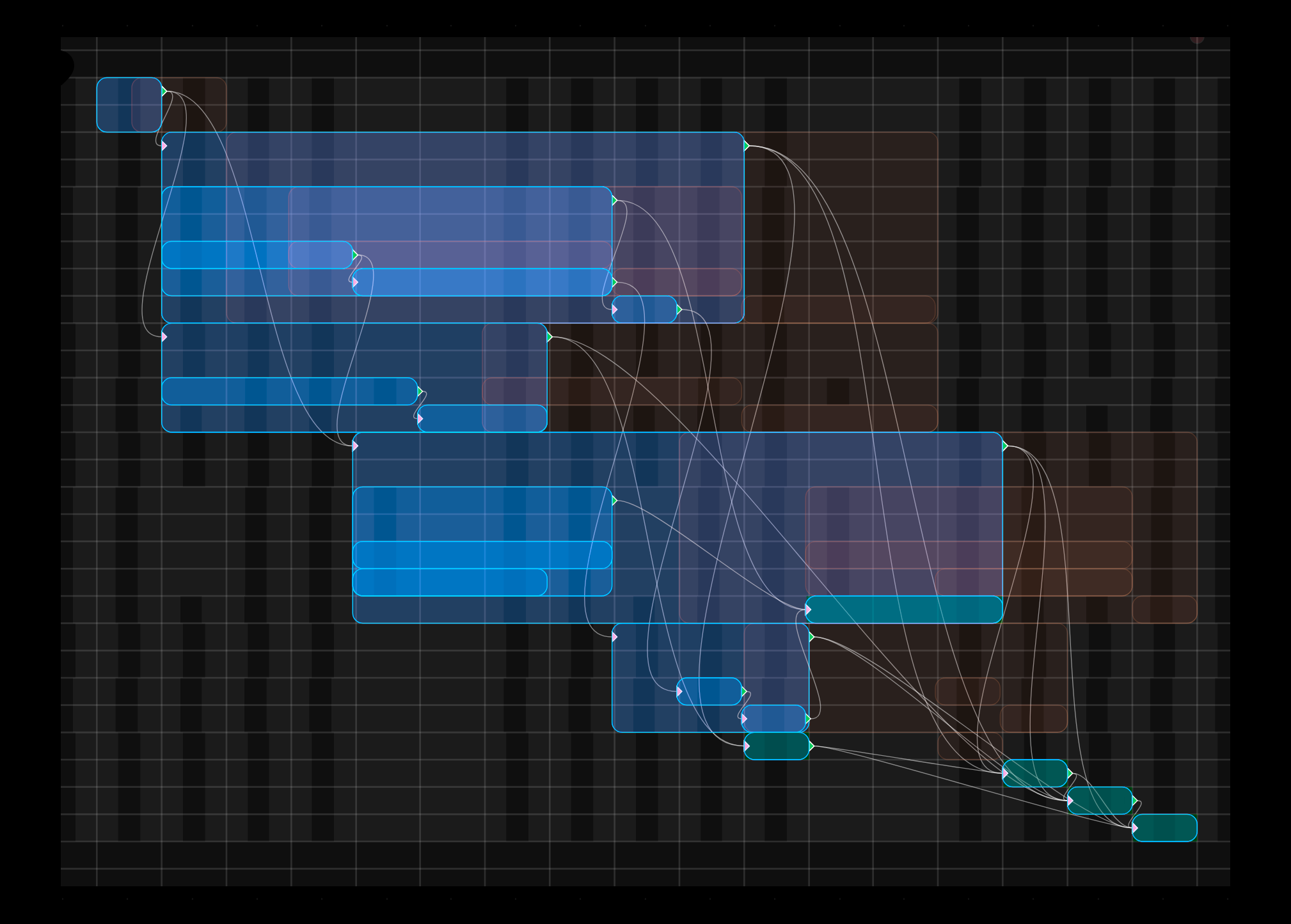 Stylised image of a deep Gantt chart
Stylised image of a deep Gantt chart
Our product "Chronograph" delivers coordinated time planning, time tracking, and task assignment by agreement, for engineers and scientists everywhere or anywhere on earth Every user sees all times and dates of others on the project around the world translated into their own local times and datas, for complete and accurate synchronisation of everything. .
With the ability to use the disciplines and deadlines (typical of
CPM
Critical
Path Method (CPM) is a formal, mathematical approach to scheduling and optimising project timelines, in 1957 revolutionising how industries managed complex
projects.
(Click on photos for "The origins of Critical Path Method.") 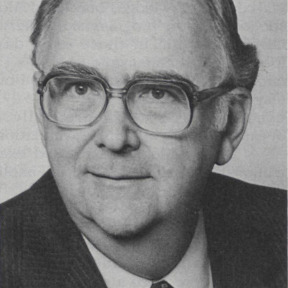
 ) mixed with the freedom
and flexibility (typical of
Agile
Agile project management prioritises adaptability,
collaboration, and customer value over rigid planning - reshaping how software and many industries manage projects.
) mixed with the freedom
and flexibility (typical of
Agile
Agile project management prioritises adaptability,
collaboration, and customer value over rigid planning - reshaping how software and many industries manage projects.
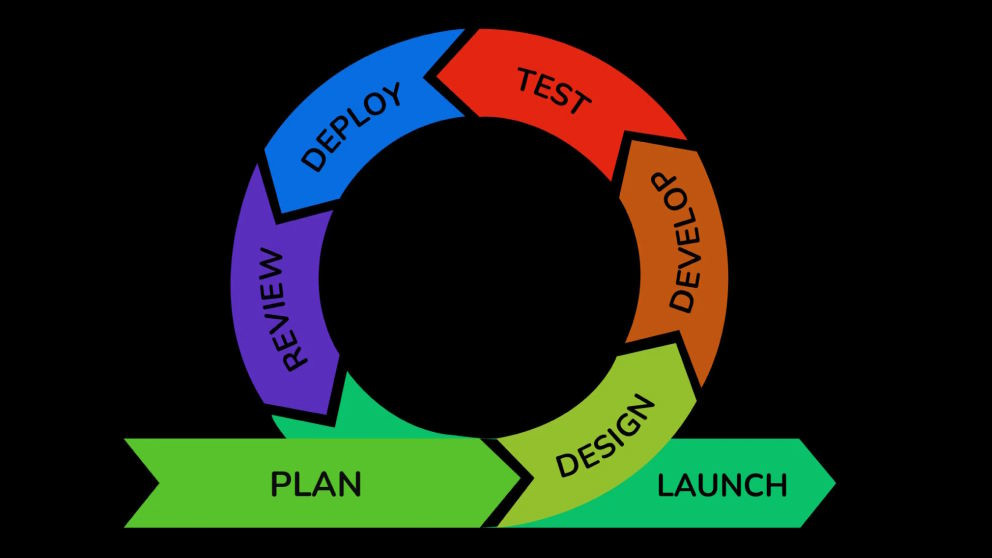
• Individuals and interactions
over processes and tools
• Working software over comprehensive documentation
• Customer collaboration
over contract negotiation
• Responding to change over following a plan
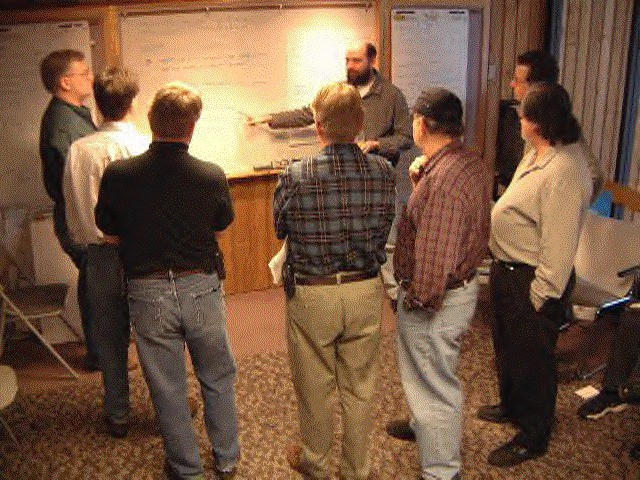 ) on a task by task
basis and with unlimited depth to the task hierarchies, Chronograph helps humans from concept to completion.
) on a task by task
basis and with unlimited depth to the task hierarchies, Chronograph helps humans from concept to completion.
Whether any task's priority is time, cost, quality or value Time Dynamics handles mixed priorities with ease.
From simple time sheets, to organisation wide aims, programs and interdependent projects, Chronograph accommodates
Human Factors
The concept of 'Human Factors' arose from the recognition that machines and systems must
be designed around human strengths and weaknesses, not just technical requirements, a lesson made dramatically clear by WWII experience.
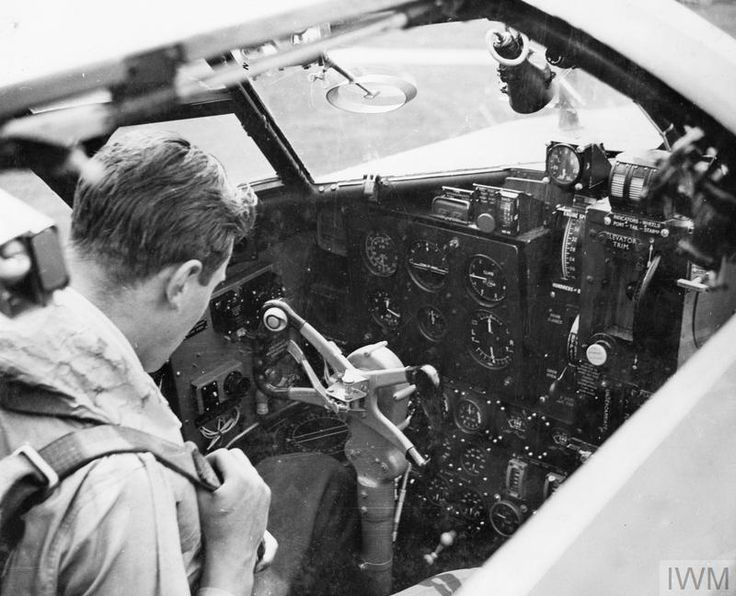 , understanding the important difference between people, facilities and resources!
, understanding the important difference between people, facilities and resources!
Evolution of plans is to be expected particularly in research & development projects. Chronograph supports adaptation of plans to changing circumstances but within any fixed limits that may have been set, showing immediate time and cost implications.
Even after any project has started, tasks can be further broken down into even lower level tasks, as the understanding of a task is more clearly resolved.
Task hierarchies may be just a few tasks or can reflect the management structure of an entire organisation's goals, programs and projects, providing critical aggregated time and cost information, and with each user's access limited to the tasks relevant to them.
Time Dynamics can help you today to evolve your project management methodologies towards tomorrow.
 Photo from Kanagawa Institute of Technology
Photo from Kanagawa Institute of Technology
Time Tracker
Time Tracker £4 per month per person
● With just two clicks
to log work on a task and one click to log a break, it's so easy to keep your time tracking up to date.
● It can even be done from your mobile! 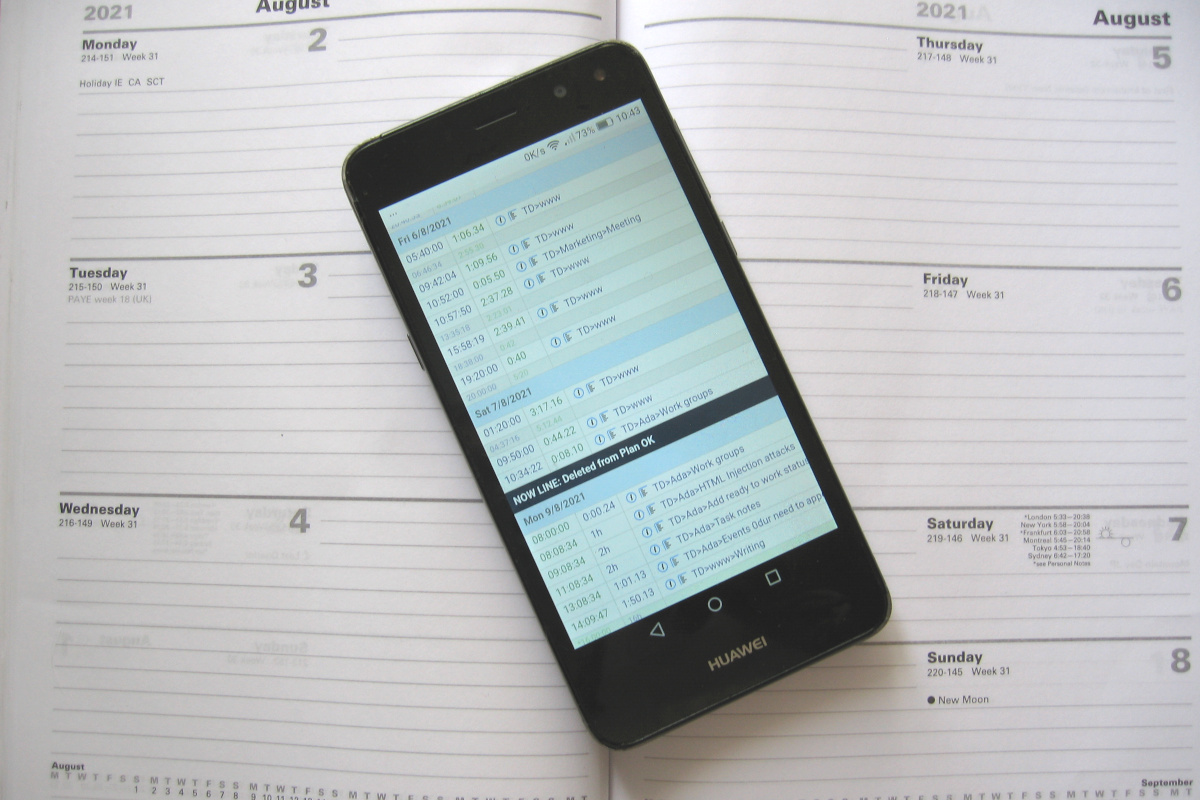
(Click on image to enlarge)
● A pop up list shows what you should be working on now.
● You can enter something you forgot or something in
advance by just entering the time,
● You can create a new task, by just giving it a name.
● Tasks can be easily renamed at any time.
● The software
calculates the time spent on each task which you can see on your Time Sheet.
● where you also mark the status of the task; Execute, Paused, Review, Incomplete,
Complete, Replaced, Cancelled. 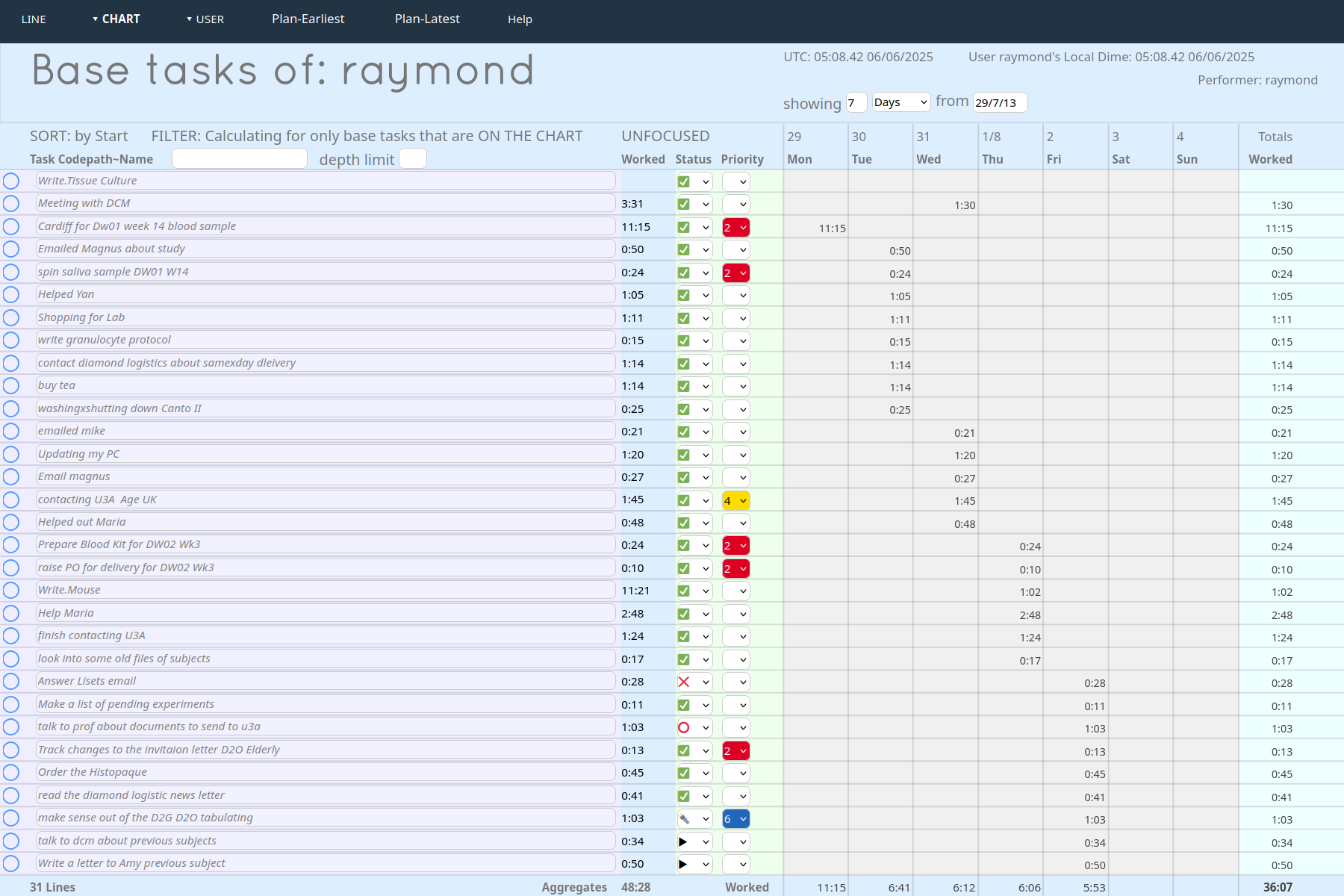
(Click on image to enlarge)
●
It can show any specified number of days, weeks, months or years, in the columns.
● Tax and academic years or your companies accounting year are all possible.
●
It can be exported as CSV for use in your spreadsheets.
For more information please get in touch.
sales@timedynamics.ltd
Tel: 00 3934 9394 9050
- Clear
time line and flexible time sheet. Two clicks to log time against a task. One click to log a break. Export mode to cut and paste your data and output into spreadsheets
or text documents if you like.
Time Team
Time Team £8 per month per person
● Time Team allows people to
assign tasks between each other and give restricted visibility into each others task trees and progress.
● Assignment only takes place with confirmed
agreement between the assignor and performer - of task constraints such as start, finish work time etc. This is vital for managing project teams across the
organisation.
● At any time before or during a project, any task can be assigned to any person in the team, 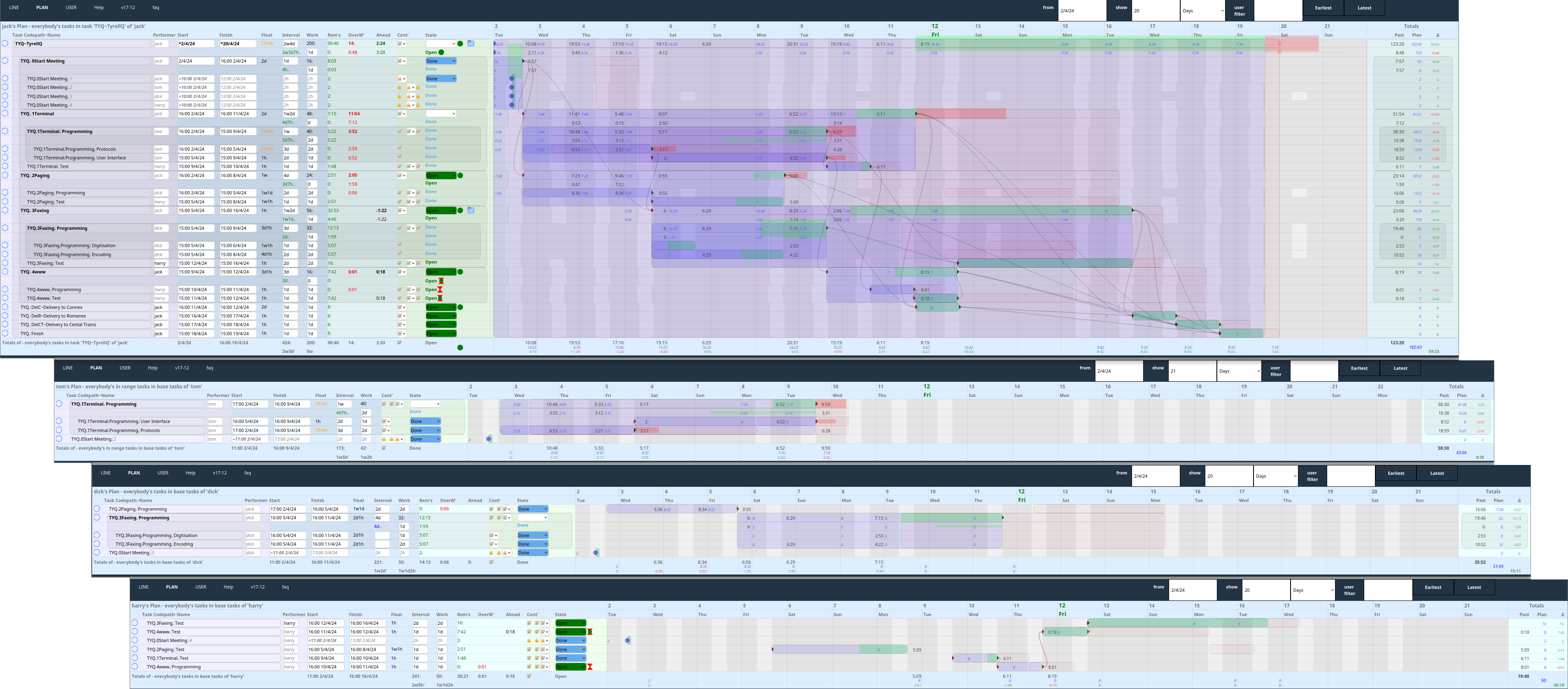
(Click on image to
enlarge)
For more information please get in touch.
sales@timedynamics.ltd
Tel: 00 3934 9394 9050
- Task assignment is only with clear agreement between
assignor and performer making responsibilities consensual and crystal clear.
Time Planner
Time Planner £12 per month per person
● The Time Planner extends
Time Tracker with classic Critical Path Method (CPM) Gantt chart planning predecessor/successor relations, and time frame and work time estimations for
each task.
● With the Gantt chart plan superimposed on your Time Tracker data you can make a clear comparison between tracked time and planned time.
●
Progress is clearly visible with the numbers and on the chart showing planned work against tracked work and
● the amount of 'Slip' shows how far ahead
or behind you are on any task as time passes. 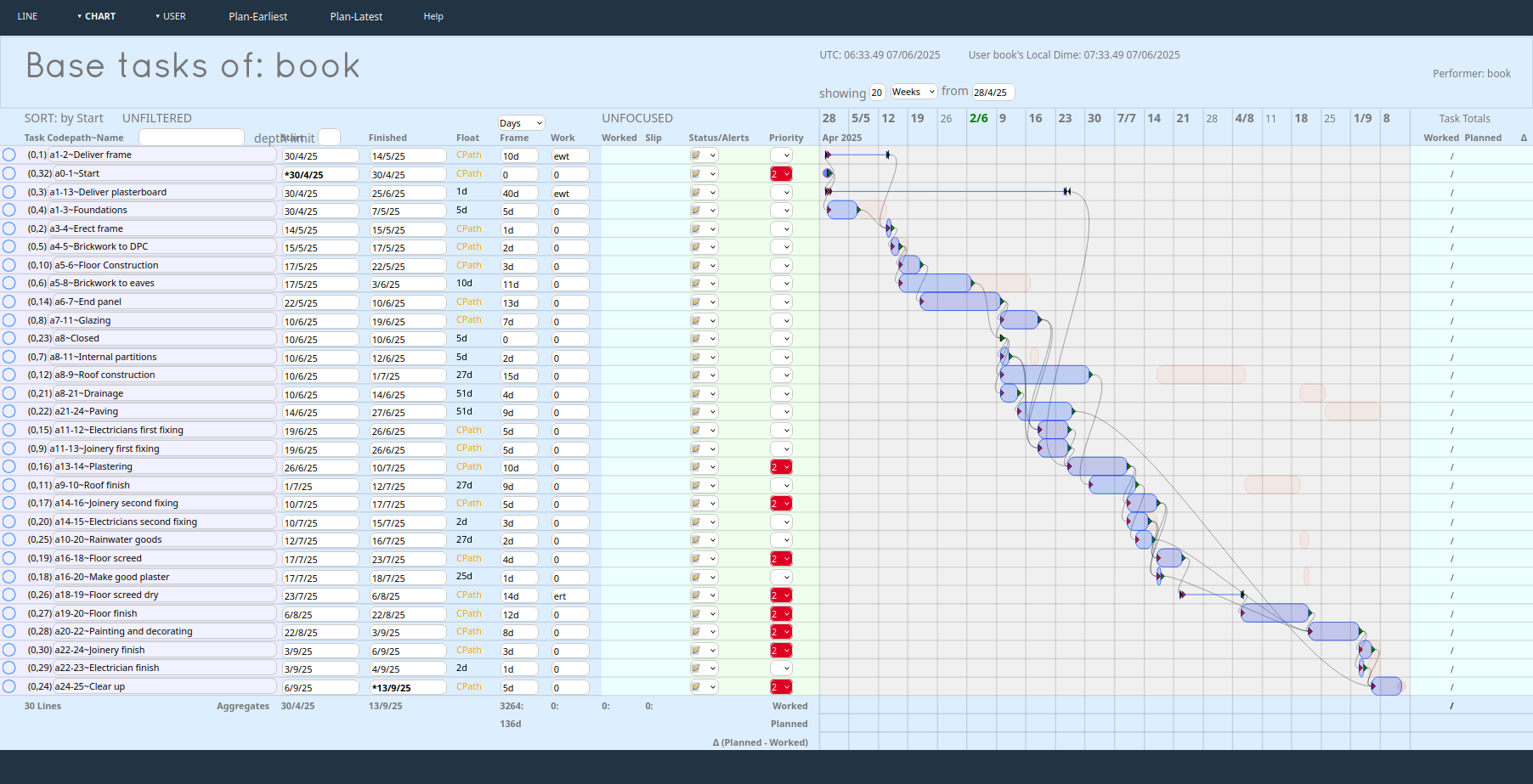
(Click on image to enlarge)
For more information please get
in touch.
sales@timedynamics.ltd
Tel: 00 3934 9394 9050
- Tracked time and planned time displayed together on the same Gantt Chart for clear progress comparisons.
Task Tree
Task Tree £12 per month per person
● Task Tree allows every task
to be easily broken down into sub-tasks or to be included in a super-task. The number of levels is not restricted. All projects simply become different high
level tasks and can therefore be included together so that you can see clearly time available for concurrent projects. (A project is just a high level task)
●
Clear warnings are given when the time interval required by sub-tasks is larger than the time interval of the containing task.
● Tasks can be easily
dragged and dropped in the task hierarchy provided by Task Tree. 
(Click on image to enlarge)
For more
information please get in touch.
sales@timedynamics.ltd
Tel: 00 3934 9394 9050
- Supports task hierarchies so Work Breakdown Structures are absolutely
clear on the Gantt Chart. Easy ability to zoom in to specific sub-tasks or zoom out to view a super-task.
 Photo from Stockcake
Photo from Stockcake
Task Link
Task Link £8 per month per person
● Link each task to a relevant
file or folder wherever they are stored;
● on your own computer
● on your LAN
●
on your VPN
● In the cloud
● on someone else's server
● Its should be and it is up to you. You can
also link to websites! 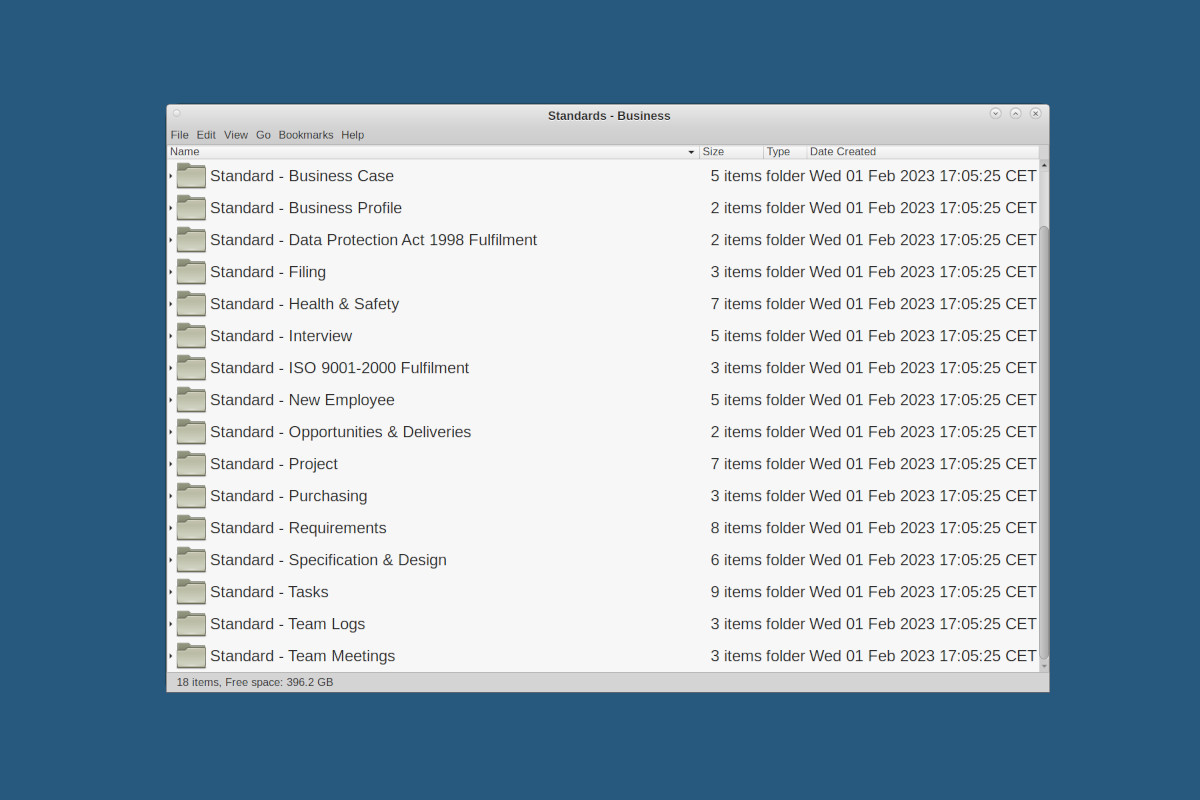
(Click on image to enlarge)
For more information please get in touch.
sales@timedynamics.ltd
Tel: 00 3934 9394 9050
- Connects a task to a
file or directory on your own computer, the LAN, a VPN or can link to a URL on the web.
Task Template
Task Template £8 per month per person
Frequently projects or tasks
and their sub-tasks need to be repeated;
● Task Template allows any Task Tree the user chooses to be re-used as a template for a new Task Tree,
●
easily transposed into the future and customised,
● and moved into any part of the organisations current Task Tree.
● With
Time Team also then you can assign the same or different people to the roles involved and completely re-plan the task as you wish you save a lot of duplicated
work.
For more information please get in touch.
sales@timedynamics.ltd
Tel: 00 3934 9394 9050
- Task replication,
re-scheduling, re-assignment and re-use of past plans based on actual worked time.
Cash Planner
Cash Planner £10 per month per person
● With Cash Planner;
●
It's easy to generate a cash flow forecast.
● Review the planned income and outgoings of a project at any level in the Task Tree or
of any specific type.
● See how the cash balance changes day by day, week by week, month by month etc.
●
Prepare to acquire financing to cover negative balances where necessary. 
(Click on image to enlarge)
For more information please get in touch.
sales@timedynamics.ltd
Tel:
00 3934 9394 9050
- Supports cash flow planning for projects.
Cash Tracker
Cash Tracker£10 per month per person
● This is currently
under development but the idea is to be able to record actual income and outgoing cash related to any task as and when it occurs. Thus allowing a clear comparison
between the plan and the actual cash flow. ![]()
(Click on image to enlarge)
For more information please get in touch.
sales@timedynamics.ltd
Tel: 00 3934
9394 9050
- Under development.
Because worked time and planned time can be shown together on the Gantt chart for each task, for each calendar column, reviews are made easy.
Chronograph requires an agreed plan between the assignor (often the manager) and the performer of a task before its execution so responsibilities become crystal clear. Any task's Status can be reviewed as required, but the Status only changes by agreement.
If there is any necessary re-planning it is likely to take minutes rather than hours. There are clear warnings of possible consequences or infringement of pre-set limits.
In research and development projects, new sub-tasks may emerge and tasks may take more or less time than expected. Yet this reality is often overlooked or badly handled. Chronograph plans adapt, rather than fall apart.
Assignment by agreement, supports thoughtful adaptation to changing circumstances, with well understood carefully contained consequences.
With Chronograph it is easy to switch pre-prepared contingency plans in or out of a larger plan, as required.
Time Dynamics isn't drawn into fads and fashions in the project management world, but would rather learn from history carefully selecting real achievements
like
NASA's Apollo program
The Apollo program’s project management (1960s–1970s)
was one of the most complex management efforts in history and pioneered several key practices:
• Systems management approach
- NASA used systems engineering and systems management to coordinate thousands of contractors, subsystems, and components, ensuring all parts worked
together smoothly.
• Work Breakdown Structure (WBS) - NASA formally adopted WBS, breaking the enormous program into hierarchical
tasks, making it easier to assign responsibilities, track progress, and manage costs.
• Configuration management - With constant
design changes, NASA set up formal configuration control processes to document, approve, and communicate changes across all teams.
• Integrated
schedules and milestones - Project plans included critical milestones, master schedules, and interlinked contractor timelines, all tracked centrally.
• Earned
Value Management (EVM) - NASA used early forms of EVM to measure cost and schedule performance against planned objectives, detecting problems early.
• Risk
management - Apollo teams systematically identified technical and programmatic risks and developed mitigation plans (e.g., redundancy, parallel development).
• Strong
centralized oversight - NASA’s program office had clear authority over major contractors and subsystems, with disciplined reporting, regular reviews,
and decisive leadership. 
(Click on image to enlarge)
, Lockheed Martin's
Skunk
Works
Clarence L. "Kelly" Johnson is the Albert Einstein of aerospace design. Johnson's aircraft programs were so groundbreaking
and historically influential, that he and Lockheed's Skunk Works are forever enshrined in humanity's technology hall of fame.
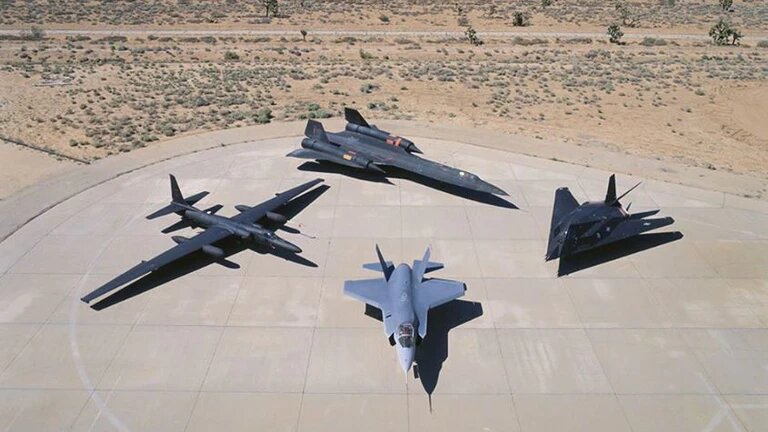
(Click
on image to enlarge)
, or the
Capability Maturity Model (CMM)
The Capability Maturity
Model (CMM) was first introduced in 1987 by the Software Engineering Institute (SEI) at Carnegie Mellon University.
1. Initial (chaotic,
ad hoc)
2. Repeatable (basic project management)
3. Defined (standard, documented processes)
4. Managed
(measured and controlled)
5. Optimizing (continuous improvement)
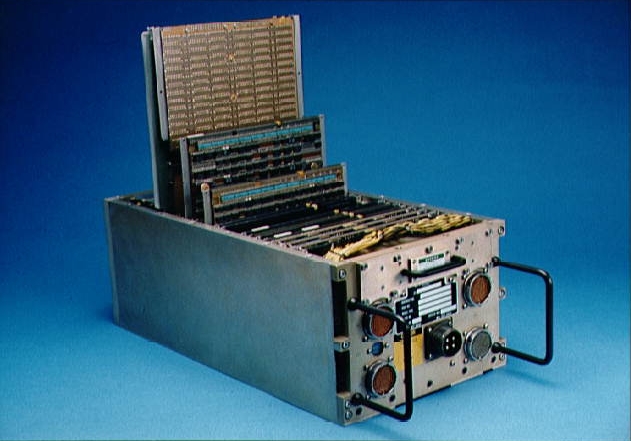 used for the Space Shuttle software development program.
used for the Space Shuttle software development program.
Most of the lessons learned are still applicable today.
Choose the tools to suit you. In its very simplest mode of operation you use only Time Tracker viewing your data through Chronograph's Time Line page and Time Chart page for typical time sheets, but you can do far more than this...
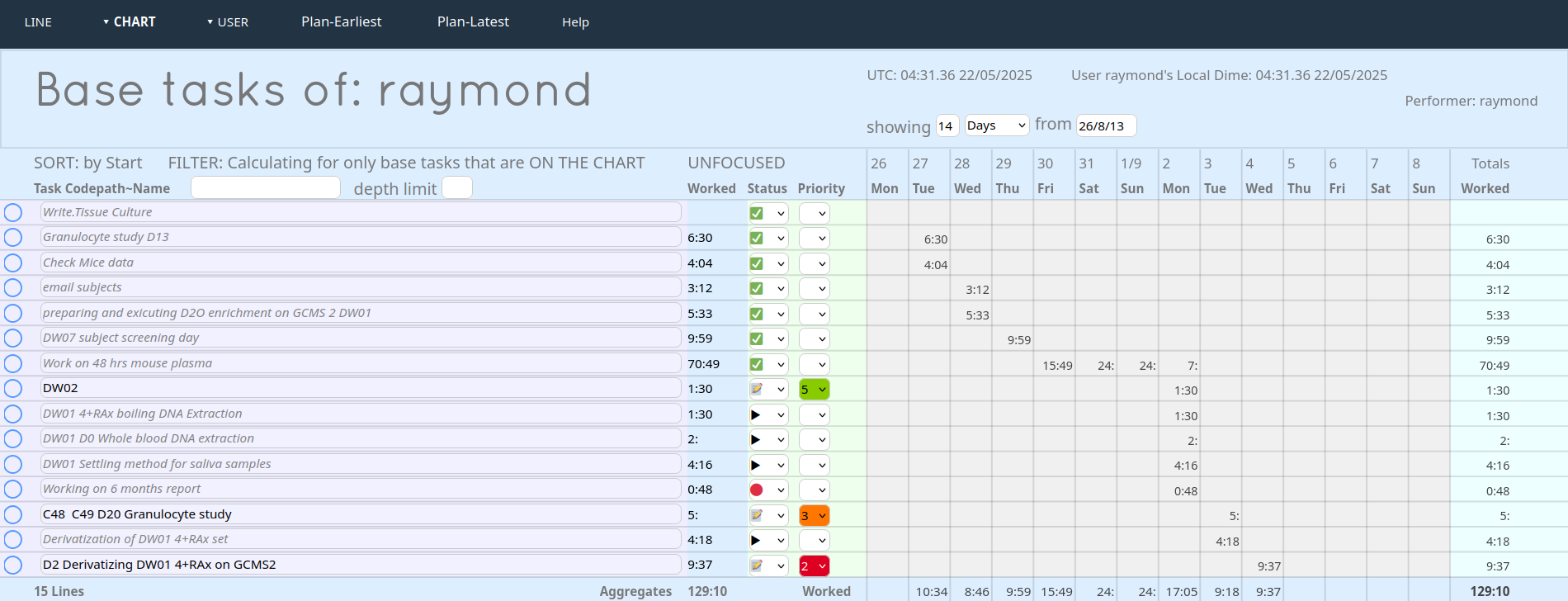
Chronograph gives you the numbers like nothing else will, combining past time tracking with future planning, visible for every task in the task hierarchy, from any one person to the whole organisation with the ability to copy any task with its sub-tasks to form a new plan or become a component in a new plan.
Below are four simple Chronograph Deep Gantt Chart windows, combined in one image, each window giving a different view of the same project; the first window for the project manager and then one window for each of the people working for them on the project. Of course a project might have hundreds of people in multiple departments across the organisation each with their own view. The manager can also allow people to view the whole project so as to see clearly how their work and the work of others fits in.

Today we are importing and testing Chronograph on the thousands of tasks and thousands of dependencies of NASA's Moon to Mars Architecture. It is the way we embrace challenge.
We are still looking for more details on the projects related to the Moon to Mars Architecture and program. So this chart is still just a rough start simply because there is a lot of detailed information we just don't have.
CHART BELOW UNDER CONSTRUCTION
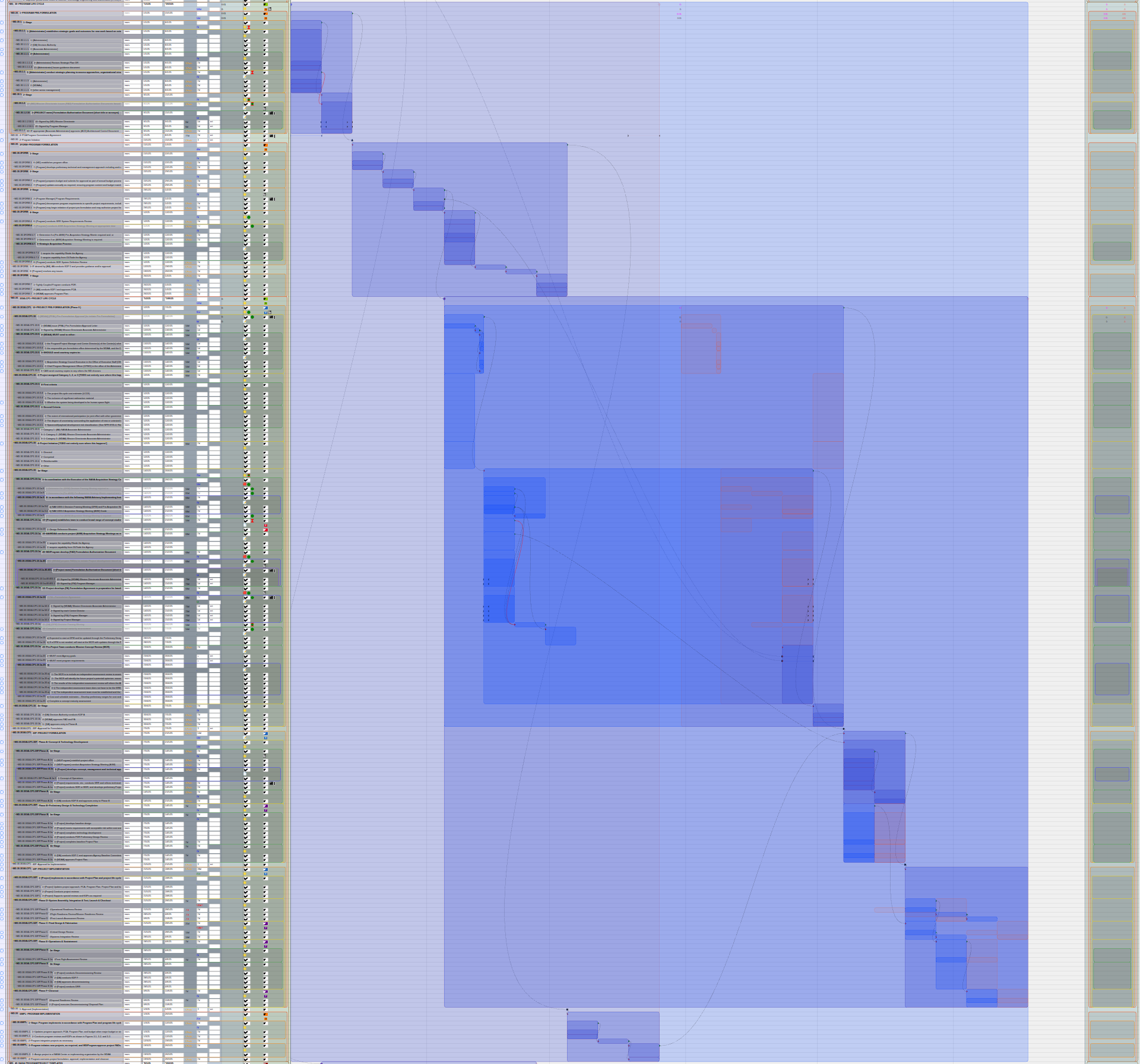
CHART ABOVE UNDER CONSTRUCTION
Chronograph is the trusted tool you need to go from concept to completion, to dynamically adjust low level plans on the fly, while not disrupting higher level plans when you do it.
Chronograph's Task Tree allows you to fit your task structures to your organisation's structure so that at every level the use of time is clearly appreciated, managed and understood. Projects can be coordinated or independent, sharing people, facilities and resources.
Chronograph supports a new paradigm in time management, combining the discipline and also the freedom people need to smoothly bring concepts into reality.
 Photo by Deybson Mallony on Pixabay
Photo by Deybson Mallony on Pixabay
It is tempting to ask whether all this information is really necessary, whether we couldn't just switch some of it off. The answer is yes you can.
Chronograph grows with each person by allowing them to tailor their products to suit themselves. You can choose your tools to provide the functionality you need today, knowing that we've got you covered for tomorrow.
When learning to fly you might start with a glider and work your way up when you're ready. Not a bad way to develop a flying career.
Chronograph can start simply and grow with you, and with our Training programs, we are ready to support you whenever you need us.
 Photo by Dragoș Grigore on Unsplash
Photo by Dragoș Grigore on Unsplash
An Airbus A320 cockpit is a lot to take in at first glance. Couldn't you dispense with some of these instruments? Ask an A320 pilot what s/he thinks!
We think you'll get the same answer from an experienced Chronograph user. They won't fly without them!
Just as a pilot is soon familiar with cockpit instruments, so also piloting Chronograph becomes second nature.
From start to finish, Chronograph takes you all the way from a simple list of things to be done, to a sophisticated Deep Critical Path Method (DCPM) Gantt chart, but also allows you to use each "instrument" as and when you genuinely need it.
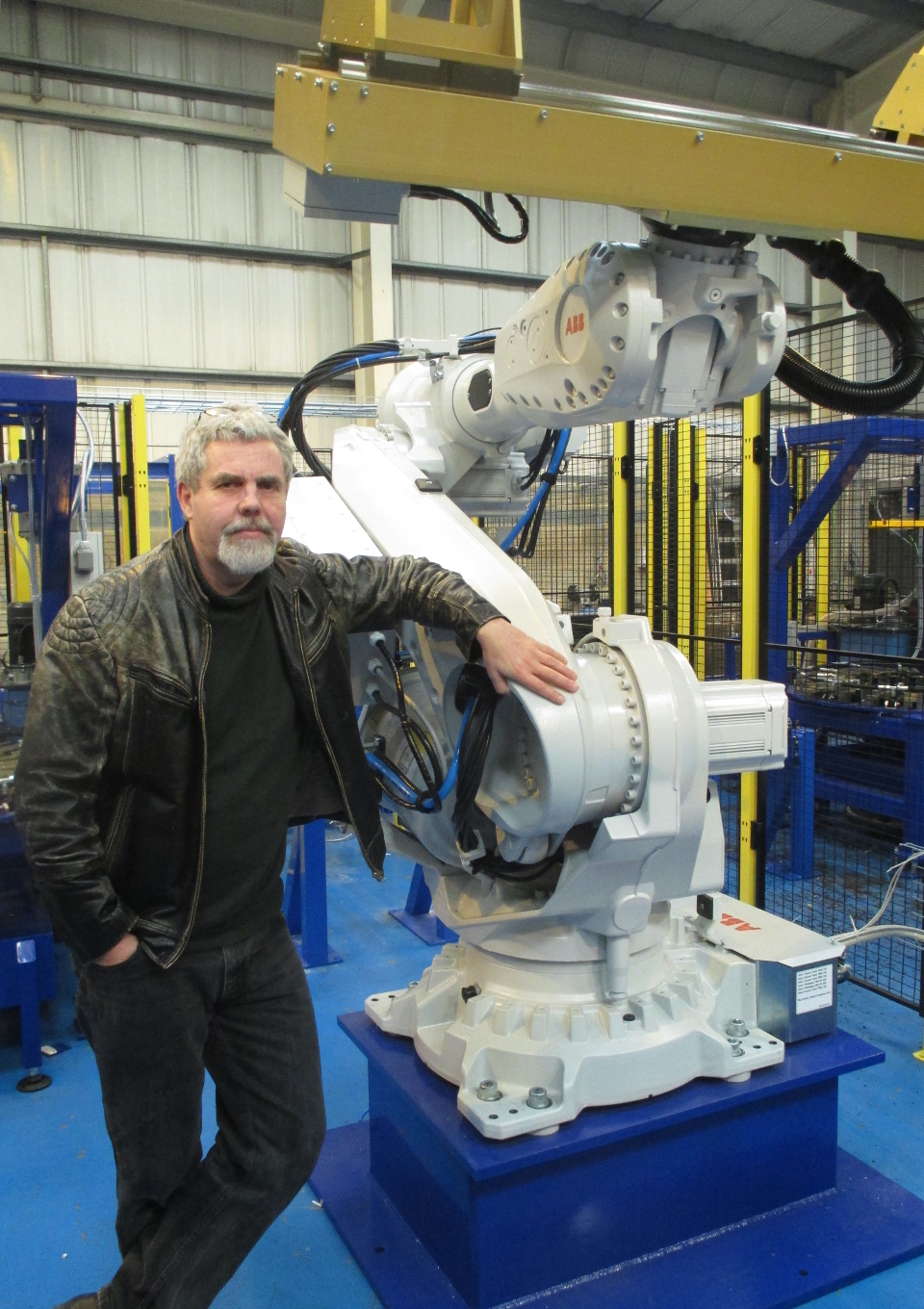 Photo by John Hudson of Geku Automation
Photo by John Hudson of Geku Automation
Chronograph was born out of experience.
"I am Tom de Havas director of Time Dynamics Ltd and former technical director of Nexus Alpha Ltd where I directed, managed and actively worked on software and hardware development from 1993 to 2005. Nexus Alpha Ltd continues to supply equipment for transport information which involves developing software and embedded systems."
"I began programming back in 1978 working on many different projects primarily in assembly language and then C. I started recording my own use of time in my 1988 Filofax."
"At Nexus Alpha Ltd planning was initially on MS Project and we used various little programs created in-house for tracking time. Then in 2003 I developed a method using time tracking data and spreadsheets to create detailed project progress reports - but a monthly report took a week to create!"
"One thing I always missed at Nexus Alpha was an integrated set of time management tools, so I could clearly plan and review projects on the fly."
"Looking at more than twenty time management applications I found almost all focussed on the popular markets or lacked precise yet flexible mechanisms to handle time and so were not suitable for innovative project management, where time-scales were not certain at the start. This does not appear to have changed even today!"
" Agile tools, although having many good features, didn't really support large project dependencies, time projection or analysis."
"In considering a new business project, I knew I didn't want to have to work again, without the time management tools I had in my head, so I made it my business to create them!"
"Time Dynamics Ltd was born."